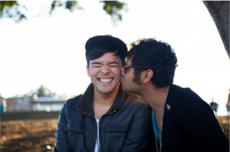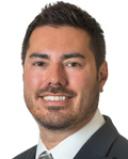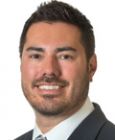Health
New Study of Gay/Bisexual Adolescent Men and Their Parents
A new study investigates relationships between gay teens and their parents.
Posted September 18, 2013

A new study conducted by the IMPACT LGBT Health and Development Program at Northwestern University is one of the first to enroll both adolescent gay/bisexual males and their parents into research. Led by Northwestern faculty member, Dr. Michael Newcomb, this brief health survey aims to examine the influence of various family factors on adolescent health outcomes.
Lesbian, gay, and bisexual (LGB) adolescents are at substantially elevated risk for a variety of negative health outcomes and risk behaviors compared to their heterosexual peers, including mental health problems1-3, suicide4-6, and substance use4,7-9. Furthermore, adolescent and young adult gay and bisexuals are the only risk group in which rates of new HIV infections are on the rise10. Unfortunately, very little research has sought to understand these health disparities between LGB and heterosexual adolescents. Even less has focused on identifying factors that might promote resilience against negative health outcomes, such as family support.
From research with heterosexual adolescents, we know that parents are powerful agents of health promotion for youth11,12. Various family processes, including support and communication styles, are factors associated with resilience that are widely recognized as critical components of the healthy development of youth13, but almost nothing is known about the ways in which the family sets the stage for healthy development among adolescent gay and bisexual males. Recent research has found that family support is linked to various health outcomes in these youth, including less frequent substance use14 and lower levels of psychological distress15, sexual risk behaviors16, and HIV infection17. However, there has been little to no research to date that has involved the parents of gay and bisexual adolescents themselves, which omits critical information needed to understand these relationships. Understanding the dynamic interactions between parents and adolescents is critical to developing effective family-based interventions for improving health outcomes in gay and bisexual adolescents.
If you are a parent that is interested in participating in this study, click on the following link to see if you and your child are eligible. This important project will help to inform future work that will develop effective prevention program for gay and bisexual adolescents.
Eligibility Screener: https://www.lgbtstudy.org/limesurvey/index.php?sid=15138&lang=en
I look forward to sharing with you the results of this study on the Sexual Continuum blog when they become available.
References
1. Cochran SD, Mays VM. Relation between psychiatric syndromes and behaviorally defined sexual orientation in a sample of the US population. Am J Epidemiol. Mar 1 2000;151(5):516-523.
2. Cochran SD, Mays VM, Sullivan JG. Prevalence of mental disorders, psychological distress, and mental health services use among lesbian, gay, and bisexual adults in the United States. J Consult Clin Psychol. Feb 2003;71(1):53-61.
3. Hatzenbuehler ML, McLaughlin KA, Nolen-Hoeksema S. Emotion regulation and internalizing symptoms in a longitudinal study of sexual minority and heterosexual adolescents. J Child Psychol Psychiatry. Dec 2008;49(12):1270-1278.
4. Garofalo R, Wolf RC, Kessel S, Palfrey SJ, DuRant RH. The association between health risk behaviors and sexual orientation among a school-based sample of adolescents. Pediatrics. May 1998;101(5):895-902.
5. Remafedi G, French S, Story M, Resnick MD, Blum R. The relationship between suicide risk and sexual orientation: results of a population-based study. Am J Public Health. Jan 1998;88(1):57-60.
6. Robin L, Brener ND, Donahue SF, Hack T, Hale K, Goodenow C. Associations between health risk behaviors and opposite-, same-, and both-sex sexual partners in representative samples of vermont and massachusetts high school students. Archives of pediatrics & adolescent medicine. Apr 2002;156(4):349-355.
7. Marshal MP, Friedman MS, Stall R, Thompson AL. Individual trajectories of substance use in lesbian, gay and bisexual youth and heterosexual youth. Addiction. Jun 2009;104(6):974-981.
8. Corliss HL, Rosario M, Wypij D, Wylie SA, Frazier AL, Austin SB. Sexual orientation and drug use in a longitudinal cohort study of U.S. adolescents. Addictive behaviors. May 2010;35(5):517-521.
9. Hatzenbuehler ML, Corbin WR, Fromme K. Trajectories and determinants of alcohol use among LGB young adults and their heterosexual peers: results from a prospective study. Dev Psychol. Jan 2008;44(1):81-90.
10. Prejean J, Song R, Hernandez A, et al. Estimated HIV incidence in the United States, 2006-2009. PloS one. 2011;6(8):e17502.
11. Krauss BJ, Godfrey C, Yee DS, Goldsamt L, Tiffany J, Almeyda L. Saving our children from a silent epidemic: the PATH program for parents and pre-adolescents. In: Pequegnat W, Szapocznik J, eds. Working with families in the era of HIV/AIDS. Thousand Oaks, CA: Sage; 2000.
12. Forehand R, Armistead L, Long N, et al. Efficacy of a parent-based sexual-risk prevention program for African American preadolescents: a randomized controlled trial. Archives of pediatrics & adolescent medicine. Dec 2007;161(12):1123-1129.
13. Hawkins JD, Catalano RF, Miller JY. Risk and protective factors for alcohol and other drug problems in adolescence and early adulthood: implications for substance abuse prevention. Psychological bulletin. Jul 1992;112(1):64-105.
14. Newcomb ME, Heinz AJ, Mustanski B. Examining risk and protective factors for alcohol use in lesbian, gay, bisexual, and transgender youth: a longitudinal multilevel analysis. J Stud Alcohol Drugs. Sep 2012;73(5):783-793.
15. Mustanski B, Newcomb M, Garofalo R. Mental health of lesbian, gay, and bisexual youth: A developmental resiliency perspective. Journal of gay & lesbian social services. Jan 1 2011;23(2):204-225.
16. Schneider J, Michaels S, Bouris A. Family network proportion and HIV risk among black men who have sex with men. J Acquir Immune Defic Syndr. Dec 15 2012;61(5):627-635.
17. Garofalo R, Mustanski B, Donenberg G. Parents know and parents matter; is it time to develop family-based HIV prevention programs for young men who have sex with men? J Adolesc Health. Aug 2008;43(2):201-204.
About the Sexual Continuum Blog
Dr. Mustanski is the Director of the IMPACT LGBT Health and Development Program at Northwestern University. You can follow the Sexual Continuum blog by becoming a fan on Facebook. He periodically live tweets from research conferences on sexuality and you can follow him@sexualcontinuum.




